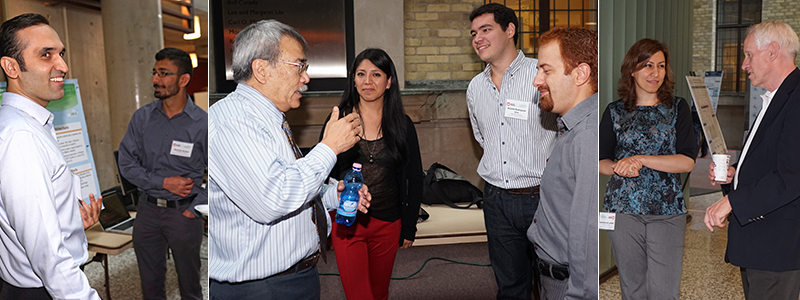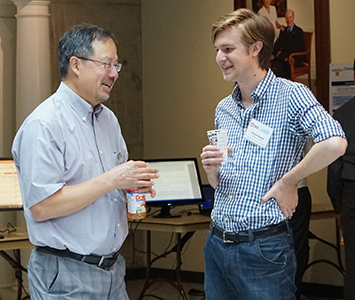July 11, 2014

The Internet has revolutionized how we communicate, work, play, and relax. It has the potential to enable smart roads and cities to improve our quality of life while protecting the environment for future generations. But the Internet has serious deficiencies in security, privacy, and flexibility. So how do we replace today’s web with an improved Internet? The SAVI Network is exploring an architecture for information technology infrastructure where a new Internet could be defined in software.
We’re almost there, says Alberto Leon-Garcia, a professor in The Edward S. Rogers Sr. Department of Electrical & Computer Engineering (ECE) and scientific director of the Smart Applications on Virtual Infrastructure (SAVI) network.
“You are now able to create new networks by installing software on this virtual infrastructure without changing the physical infrastructure,” said Professor Leon-Garcia. “Three years ago when we started, we believed that those things could be done. But now we’re at the stage where can actually do them because we’ve built the virtual infrastructure.”
SAVI is an NSERC Strategic Network that includes ten universities, more than 20 industry partners, research and education (R&E) networks, and high-performance computing (HPC) centres.
This national team is pioneering an infrastructure for connecting things and services that haven’t even been invented yet—everything from smart grids for more efficient power distribution and consumption, to e-health information, to telecommunications applications.
Now completing its third year of five, SAVI hosted its annual general meeting this week in ECE.
“SAVI is about virtualized infrastructure—that’s the testbed—and running smart applications on top of this future infrastructure,” said Professor Leon-Garcia. “Last year our target was to have the testbed deployed this year, and we’re actually one year ahead of schedule, so now we’re transitioning to doing the research on the future applications.”
The two-day meeting featured workshops, keynotes covering topics from open-source in cloud computing to cyber-countermeasures, and nearly fifty poster and demonstrations spanning the five SAVI themes: future applications, resource control & management, smart converged edge, integrated wireless/optical access, and application platform testbed.

Stuart Byma, an MASc candidate in ECE, presented his work on incorporating “shareable” reconfigurable hardware elements into the SAVI testbed. “It seems like the whole project has gelled into a very cohesive operation, especially with the testbed coming online,” said Byma, who begins his PhD at École Polytechnique Fédérale de Lausanne in Switzerland this fall. “I think a lot of people have fully understood the implications of that—it is a new vision for the future.”
More information:
Marit Mitchell
Senior Communications Officer
The Edward S. Rogers Sr. Department of Electrical & Computer Engineering
416-978-7997; marit.mitchell@utoronto.ca